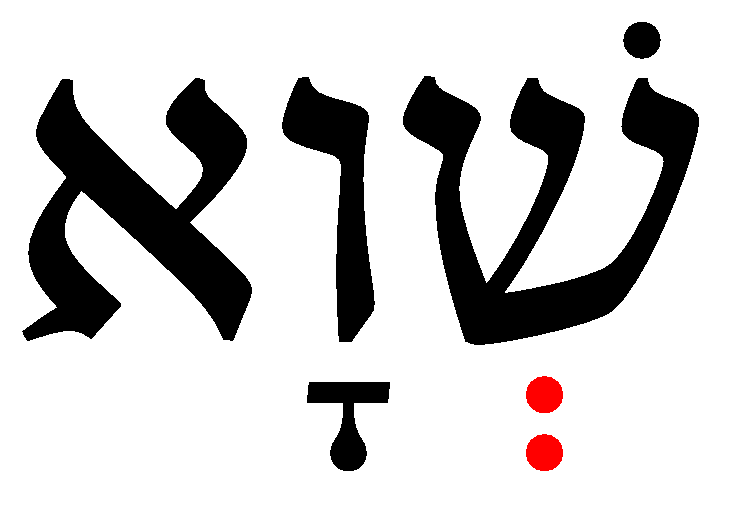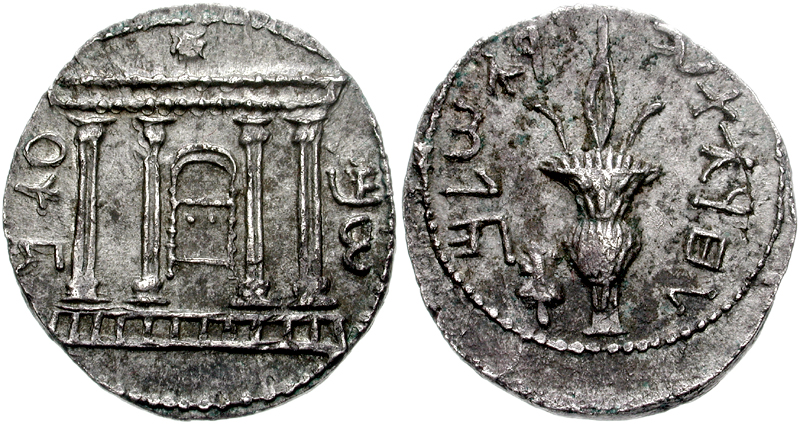|
Patah
Pataḥ ( ', , Biblical Hebrew: ') is a Hebrew niqqud vowel sign represented by a horizontal line underneath a letter. In modern Hebrew, it indicates the phoneme which is close to the " sound in the English word ''far'' and is transliterated as an ''a''. In Modern Hebrew, a ' makes the same sound as a qamatz, as does the ' ( , "reduced "). The reduced (or ') niqqud exist for ', ', and ' which contain a ' next to it. In Yiddish orthography, a ''pataḥ'' (called ''pasekh'' in Yiddish) has two uses. The combination of pasekh with the letter aleph, , is used to represent the vowel the combination of pasekh with a digraph consisting of two yods, , is used to represent the diphthong j Pronunciation The following table contains the pronunciation and transliteration of the different s in reconstructed historical forms and dialects using the International Phonetic Alphabet. The letters Bet and Het used in this table are only for demonstration, any letter can be used. A ... [...More Info...] [...Related Items...] OR: [Wikipedia] [Google] [Baidu] |
Niqqud
In Hebrew orthography, niqqud or nikud ( or ) is a system of diacritical signs used to represent vowels or distinguish between alternative pronunciations of letters of the Hebrew alphabet. Several such diacritical systems were developed in the Early Middle Ages. The most widespread system, and the only one still used to a significant degree today, was created by the Masoretes of Tiberias in the second half of the first millennium AD in the Land of Israel (see Masoretic Text, Tiberian Hebrew). Text written with niqqud is called '' ktiv menuqad''. Niqqud marks are small compared to the letters, so they can be added without retranscribing texts whose writers did not anticipate them. In modern Israeli orthography ''niqqud'' is mainly used in specialised texts such as dictionaries, poetry, or texts for children or new immigrants to Israel. For purposes of disambiguation, a system of spelling without niqqud, known in Hebrew as '' ktiv maleh'' (, literally "full spelling") had develope ... [...More Info...] [...Related Items...] OR: [Wikipedia] [Google] [Baidu] |
Hebrew Alphabet
The Hebrew alphabet (, ), known variously by scholars as the Ktav Ashuri, Jewish script, square script and block script, is a unicase, unicameral abjad script used in the writing of the Hebrew language and other Jewish languages, most notably Yiddish, Judaeo-Spanish, Ladino, Judeo-Arabic languages, Judeo-Arabic, and Judeo-Persian. In modern Hebrew, vowels are increasingly introduced. It is also used informally in Israel to write Levantine Arabic, especially among Druze in Israel, Druze. It is an offshoot of the Aramaic alphabet, Imperial Aramaic alphabet, which flourished during the Achaemenid Empire and which itself derives from the Phoenician alphabet. Historically, a different abjad script was used to write Hebrew: the original, old Hebrew script, now known as the Paleo-Hebrew alphabet, has been largely preserved in a variant form as the Samaritan script, Samaritan alphabet, and is still used by the Samaritans. The present ''Jewish script'' or ''square script'', on the cont ... [...More Info...] [...Related Items...] OR: [Wikipedia] [Google] [Baidu] |
Yiddish
Yiddish, historically Judeo-German, is a West Germanic language historically spoken by Ashkenazi Jews. It originated in 9th-century Central Europe, and provided the nascent Ashkenazi community with a vernacular based on High German fused with many elements taken from Hebrew language, Hebrew (notably Mishnaic Hebrew, Mishnaic) and to some extent Aramaic. Most varieties of Yiddish include elements of Slavic languages and the vocabulary contains traces of Romance languages.Aram Yardumian"A Tale of Two Hypotheses: Genetics and the Ethnogenesis of Ashkenazi Jewry".University of Pennsylvania. 2013. Yiddish has traditionally been written using the Hebrew alphabet. Prior to World War II, there were 11–13 million speakers. 85% of the approximately 6 million Jews who were murdered in the Holocaust were Yiddish speakers,Solomon Birnbaum, ''Grammatik der jiddischen Sprache'' (4., erg. Aufl., Hamburg: Buske, 1984), p. 3. leading to a massive decline in the use of the language. Jewish ass ... [...More Info...] [...Related Items...] OR: [Wikipedia] [Google] [Baidu] |
Shva
Shva or, in Biblical Hebrew, shĕwa () is a Hebrew alphabet, Hebrew niqqud vowel sign written as two vertical dots () beneath a letter. It indicates either the phoneme (shva na', mobile shva) or the complete absence of a vowel (/Zero (linguistics), Ø/) (shva naḥ, resting shva). It is transliterated as , , , (apostrophe), or nothing. Note that use of for shva is questionable: transliterating Modern Hebrew shva naḥ with is misleading, since it is never actually pronounced – a mid central vowel (IPA ) does not exist in Modern Hebrew. The vowel was pronounced as a full vowel in earlier Hebrew varieties such as Tiberian vocalization, where it was phonetically usually identical to vowel length, short [a], in Palestinian vocalization appears as short [e] or [i], and in Babylonian vocalization as [a]. In early Greek and Latin transliterations of Hebrew such as the Hexapla, it appears as [ε] and [e], respectively. A shva sign in combination with the Hebrew diacritics, vowe ... [...More Info...] [...Related Items...] OR: [Wikipedia] [Google] [Baidu] |
Biblical Hebrew
Biblical Hebrew ( or ), also called Classical Hebrew, is an archaic form of the Hebrew language, a language in the Canaanite languages, Canaanitic branch of the Semitic languages spoken by the Israelites in the area known as the Land of Israel, roughly west of the Jordan River and east of the Mediterranean Sea. The term 'Hebrew' was not used for the language in the Hebrew Bible, which was referred to as 'language of Canaan' or 'Judean', but it was used in Koine Greek and Mishnaic Hebrew texts. The Hebrew language is attested in inscriptions from about the 10th century BCE, when it was almost identical to Phoenician language, Phoenician and other Canaanite languages, and spoken Hebrew persisted through and beyond the Second Temple period, which ended in 70 CE with the siege of Jerusalem (70 CE), siege of Jerusalem. It eventually developed into Mishnaic Hebrew, which was spoken until the 5th century. The language of the Hebrew Bible reflects various stages of ... [...More Info...] [...Related Items...] OR: [Wikipedia] [Google] [Baidu] |
Digraph (orthography)
A digraph () or digram is a pair of character (symbol), characters used in the orthography of a language to write either a single phoneme (distinct sound), or a sequence of phonemes that does not correspond to the normal values of the two characters combined. Some digraphs represent phonemes that cannot be represented with a single character in the writing system of a language, like in Spanish ''chico'' and ''ocho''. Other digraphs represent phonemes that can also be represented by single characters. A digraph that shares its pronunciation with a single character may be a relic from an earlier period of the language when the digraph had a different pronunciation, or may represent a distinction that is made only in certain dialects, like the English . Some such digraphs are used for purely etymology, etymological reasons, like in French. In some orthographies, digraphs (and occasionally trigraph (orthography), trigraphs) are considered individual letter (alphabet), letters, w ... [...More Info...] [...Related Items...] OR: [Wikipedia] [Google] [Baidu] |
Aleph
Aleph (or alef or alif, transliterated ʾ) is the first Letter (alphabet), letter of the Semitic abjads, including Phoenician alphabet, Phoenician ''ʾālep'' 𐤀, Hebrew alphabet, Hebrew ''ʾālef'' , Aramaic alphabet, Aramaic ''ʾālap'' 𐡀, Syriac alphabet, Syriac ''ʾālap̄'' ܐ, Arabic alphabet, Arabic ''ʾalif'' , and Ancient North Arabian, North Arabian 𐪑. It also appears as Ancient South Arabian script, South Arabian 𐩱 and Ge'ez script, Ge'ez ''ʾälef'' አ. These letters are believed to have derived from an Egyptian hieroglyph depicting an ox's head to Acrophony, describe the initial sound of ''*ʾalp'', the West Semitic languages, West Semitic word for ox (compare Biblical Hebrew ''ʾelef'', "ox"). The Phoenician variant gave rise to the Alpha (letter), Greek alpha (), being re-interpreted to express not the glottal consonant but the accompanying vowel, and hence the A, Latin A and A (Cyrillic), Cyrillic А and possibly the Armenian letter Ayb (Armenian le ... [...More Info...] [...Related Items...] OR: [Wikipedia] [Google] [Baidu] |
Segol
Segol (modern , ; formerly , ''səḡôl'') is a Hebrew niqqud vowel sign that is represented by three dots forming an upside down equilateral triangle "ֶ ". As such, it resembles an upside down therefore sign (a because sign) underneath a letter. In modern Hebrew, it indicates the phoneme which is similar to " e" in the English word sound in ''sell'' and is transliterated as an ''e''. In Modern Hebrew segol makes the same sound as tzere, as does the Hataf Segol ( , "Reduced Segol"). The reduced (or ''ħataf'') niqqud exist for segol, patah, and kamatz which contain a shva next to it. Pronunciation The following table contains the pronunciation and transliteration of the different segols in reconstructed historical forms and dialects using the International Phonetic Alphabet The International Phonetic Alphabet (IPA) is an alphabetic system of phonetic notation based primarily on the Latin script. It was devised by the International Phonetic Association i ... [...More Info...] [...Related Items...] OR: [Wikipedia] [Google] [Baidu] |
Modern Hebrew
Modern Hebrew (, or ), also known as Israeli Hebrew or simply Hebrew, is the Standard language, standard form of the Hebrew language spoken today. It is the only surviving Canaanite language, as well as one of the List of languages by first written account, oldest languages still spoken as a native language, native language, on account of Hebrew being attested since the 2nd millennium BC. It uses the Hebrew Alphabet, an Abjad, abjad script written from right-to-left. The current standard was Codification (linguistics), codified as part of the revival of Hebrew in the late 19th and early 20th centuries, and now serves as the Official language, sole official and national language of the State of Israel, where it is Languages of Israel, predominantly spoken by over 9 million people. Thus, Modern Hebrew is near universally regarded as the most successful instance of language revitalization in history. A Northwest Semitic language within the Afroasiatic languages, Afroasiatic langu ... [...More Info...] [...Related Items...] OR: [Wikipedia] [Google] [Baidu] |



